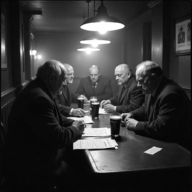Cracking the Irish Lotto: The 1992 Syndicate That Nearly Beat the System
Published by LottoCracked
📜 Introduction
In May 1992, a Cork-based accountant named Stefan Klincewicz orchestrated one of the most daring schemes in Irish lottery history. He and his syndicate attempted to buy every possible Lotto combination, aiming to guarantee a jackpot win. It nearly worked—and forced the lottery to change its rules forever.
🧮 The Master Plan
At that time, the Irish Lotto followed a 6/36 format, meaning just under two million possible combinations existed. Klincewicz and his group decided to buy them all.
- They invested around £820,000 in tickets.
- This covered more than 80 % of the possible outcomes.
- Volunteers worked tirelessly, filling out thousands of tickets and feeding them into machines.
The idea was simple: by holding nearly every combination, winning was virtually guaranteed.
🎰 Draw Night Drama
When the draw finally came, the syndicate’s gamble paid off—they had the winning numbers. But there was a twist.
- Two other players also held the winning line.
- Instead of taking the entire jackpot, the syndicate had to share the prize.
- After adding smaller-tier wins, they walked away with a net profit of around £310,000.
It wasn’t the astronomical payday they had envisioned, but it was proof their plan could work.
🔧 How the Lottery Responded
The National Lottery wasn’t about to let history repeat itself. Soon after, the rules changed:
- The format shifted from 6/36 to 6/39, making the number of possible combinations much higher.
- This change ensured that no syndicate could ever again realistically attempt to “buy the Lotto.”
The episode became legendary—a rare moment where mathematics, determination, and sheer audacity collided.
🎯 Conclusion
The 1992 Lotto syndicate didn’t break the system, but they came dangerously close. Their daring plan is remembered as one of the boldest experiments in lottery history. It proved that while probability can be calculated, luck will always have the final word.
